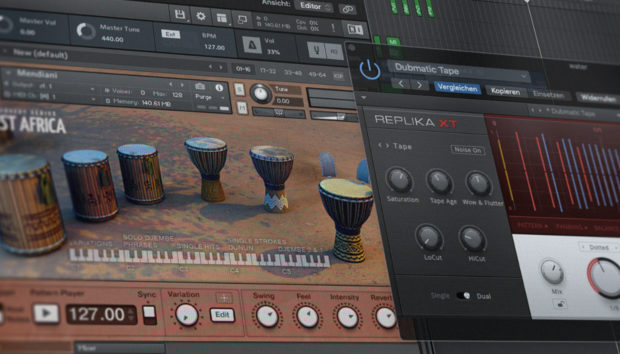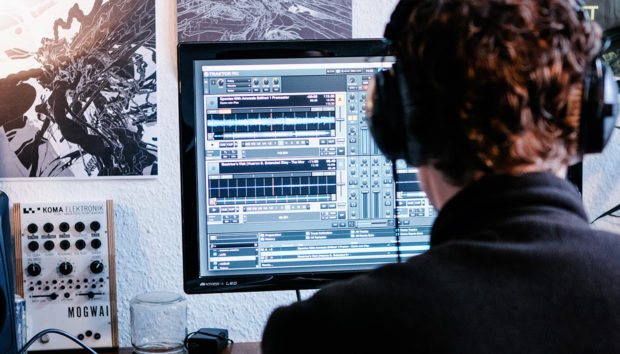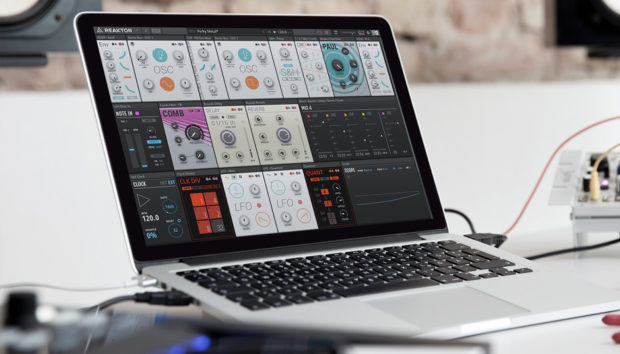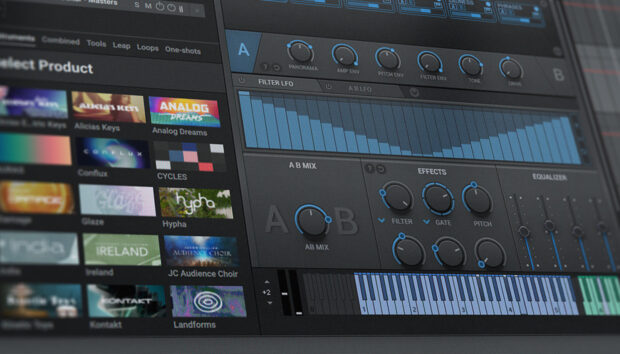Some producers layer twenty synths to get their low end right. Others make one sound carry the weight. For Broken Hill, Monark is the tool that does exactly that.
His new single “Brain Delay” – a collaboration with Soraya on Maccabi House – centers around a bass line that hits with intent. It’s gritty, hypnotic, and fluid without being overworked, and the core of that sound was shaped inside Native Instruments’ Monark. No endless routing chains, no twenty-layer stacks. Just one synth doing the heavy lifting.
Broken Hill’s background helps explain the discipline.
As a full-time audio engineer and a rising producer based in California, he’s used to making ideas land quickly and clearly. In this interview, he shares how Monark helps him dial in groove-forward bass lines, keep his workflow tight, and make mix-ready decisions without getting stuck in sound design.
Jump to these sections:
- How Broken Hill shaped the “Brain Delay” bass line with Monark
- Tips for making Monark cut without taking over the mix
- When to use automation vs. external effects
- Why Monark fits the Maccabi House aesthetic
- Workflow advice for getting more out of fewer synths
- How to build a club-ready patch quickly with Monark
Stick around for tips, tricks, and why committing fast can be the difference between finishing a track or tweaking forever.
What made you reach for Monark during the sessions for “Brain Delay”?

Monark has been a staple in my synth lineup for the past year. There’s something about its tone that just hits different – super warm and analog-feeling, but still tight enough to sit cleanly in a modern mix. When building the foundation for “Brain Delay,” I needed a bass sound that could carry the track emotionally and sonically, and Monark delivered. The way it handles mid-bass content is especially nice – fat without getting muddy, which gave the track the backbone it needed.
It also doesn’t feel over-engineered.
Sometimes, I’ll spend way too long in more complex synths trying to sculpt the perfect patch. With Monark, the sweet spot is just easier to find. I pulled up a patch, made a few quick tweaks, and right away had that gritty, driven low-end that inspired the rest of the production.
How do you keep a sound like that from overpowering the rest of the mix while still feeling aggressive?
Monark has such a commanding presence in the low-mids that I’ve learned to let it breathe. I approach it like a lead instrument rather than just a utility bass. In “Brain Delay,” Monark is doing a lot of the heavy lifting, so instead of stacking a bunch of other layers around it, I built space into the arrangement. Less is more when a synth has this much attitude out of the box.
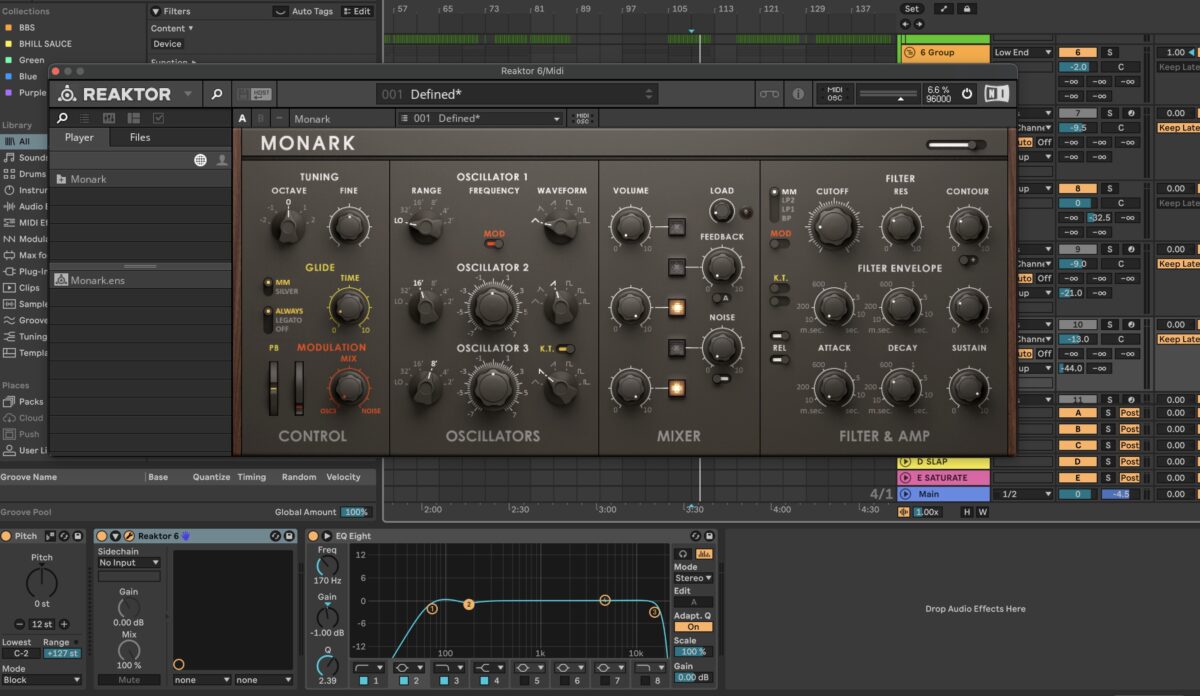
From a mix perspective, I’ll use gentle sidechaining to keep the kick and bass from clashing, and I’ll carve a bit of space with EQ – but honestly, Monark’s tone is already so well-behaved
that it sits pretty naturally. A lot of the aggression comes from how it’s played and automated, rather than brute-forcing it louder or more saturated. If I ever feel the bass could use more power, I love to use Izotope Trash 2 – its creative saturation settings always provide me with inspiration.
Pro tip from Broken Hill: Play around by automating not just one parameter but two while using Monark. I find some of my most unique sound design comes from playing with 2 things like the contour and resonance of a sound in unison.
Are you running Monark through any external FX chains for movement, or relying mostly on what’s happening inside the plugin?
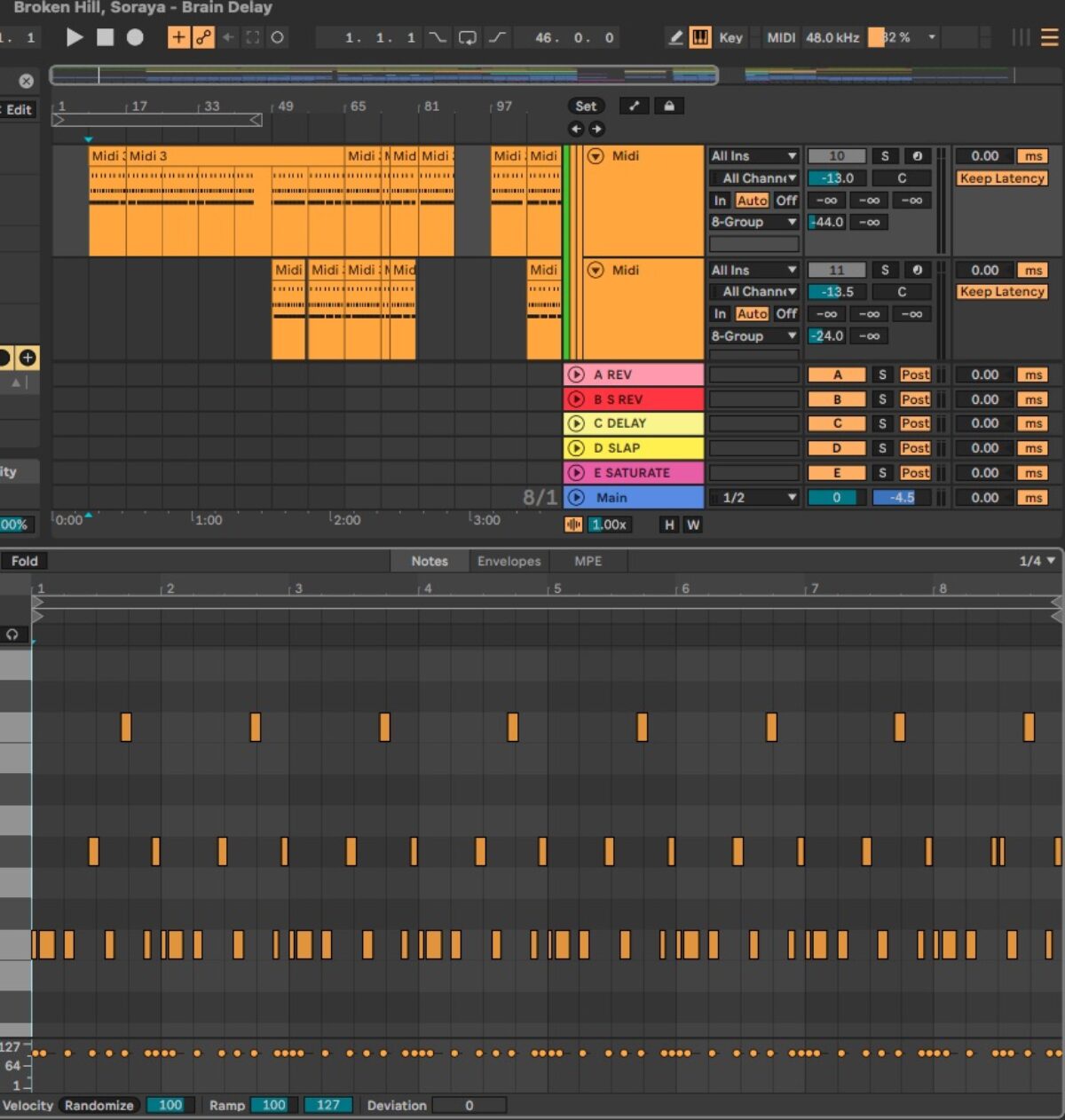
I usually start by dialing in movement within Monark itself. Automating the filter cutoff, resonance, or envelope controls adds tons of life without needing to reach for external tools. On “Brain Delay,” I rode the cutoff slightly over time to create this pulsing sensation that moves with the groove, almost like it’s breathing in sync with the drums.
That said, I’m not shy about layering in subtle external effects after the fact. A little chorus or phaser can help add stereo width or texture without washing it out. But honestly, Monark’s core sound is already so rich, it doesn’t need much. It’s more about enhancing what’s already there than covering it up with processing. I would also like to add a stereo delay to widen the sound on a case-by-case basis.
Maccabi House has a really distinct groove-led identity – how does your use of Monark fit into that aesthetic?

Maccabi House is all about groove, bounce, and personality. When I was working on “Brain Delay,” I wanted the bass line to feel alive – not just looping, but evolving. The way Monark reacts to automation made it a perfect fit. I played with cutoff movements and envelope contour to shape the rhythm of the bass itself, giving it this kind of swaying, hypnotic flow that complements the drums and melodic elements.
I think that’s where Monark really shines – it’s not just about sound; it’s about feel. A lot of club tracks live or die by their bass line, especially in groove-heavy labels like Maccabi House. Monark gave me the tone and flexibility I needed to push that groove forward and make it memorable.
Pro tip from Broken Hill: Find a preset that you love and tweak it until you love it even more! I have used the starter presets of Monark to create some of my most widely used sounds across my discography.
Do you think more producers should be treating soft synths like hardware – fewer tools, more intention?
Absolutely.
I think there’s something really powerful about limiting your tools and diving deep with the ones that resonate. Monark is one of those synths that I treat almost like a piece of hardware – it’s focused, punchy, and gives me what I need quickly. That plays a huge role in my
workflow. I tend to commit fast to a bass line or rhythm and move on – if it’s working, I don’t overthink it.
That momentum keeps the creative energy flowing, and Monark supports that by giving me inspiring results without needing hours of sound design.
In a way, I think producers could benefit from trusting their instincts more. Not every sound needs to be rebuilt from the ground up. If a patch hits right, tweak it a little, commit, and build around it.
I use soft synth in the studio: quick decisions, fewer distractions, and more intention in how each part fits into the bigger picture.
If someone wanted to start using Monark in club-focused music, what’s one workflow tip you’d give them off the bat?
Start with a preset that already feels close to what you’re after, and then put your energy into refining it. Monark’s presets are surprisingly usable, and they’re great for triggering new ideas. For “Brain Delay,” I started with the Initial patch in Monark, then customized it to fit the vibe I was chasing.
Once you’ve got something rolling, don’t forget to automate. The filter section is super expressive, and little moves can totally transform the groove. You don’t need 10 layers of synths if one sound is doing all the talking. That’s the power of Monark – it can be the whole statement if you let it.
Pro tip from Broken Hill: Pair the synth with iZotope Trash 2 to get more depth and grit out of the Analog pallet on Monark.
Wrapping it all up
Appreciate Broken Hill pulling back the curtain on how Brain Delay came together.
What stands out is really how focused the process is. Monark gave him exactly what he needed to anchor the track without getting lost in options. That mindset shows up throughout the production: commit early, automate with purpose, and let the bass line do the talking.
It’s a reminder that you don’t need a wall of gear or ten layers of processing to make something hit. One solid synth, used with intention, can carry the weight. For producers chasing groove-heavy club tracks, there’s a lot to take from this approach – especially if you’ve been stuck in the habit of overbuilding instead of shaping one sound that actually moves.
Less second-guessing, more momentum.
That’s how tracks get finished.
